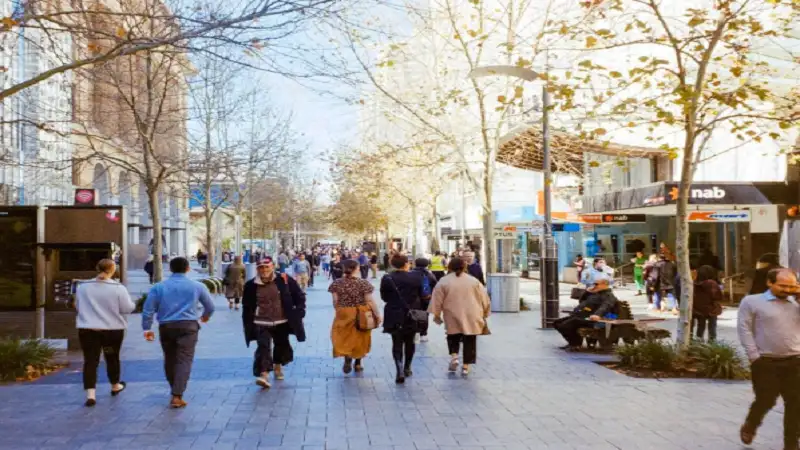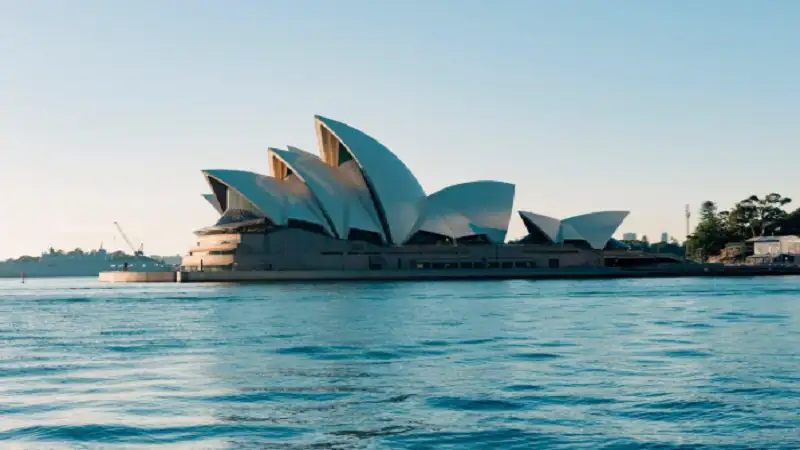Australia’s tourism industry is all set to embark on a journey to an ambitious future. They have a target to grow their visitor economy to $230 billion by 2030, and the country is getting ready for one of the most important expansions in the history of Australian tourism.
After the pandemic’s great impact on the tourism industry, Australia’s big move is not only an economic strategy but also a commitment to improving its global footprint.
This article explores the strategies, opportunities for travelers, and more that lie ahead for Australia as the nation works toward its bold 2030 vision.
Australia’s Bold $230 Billion Dream
Tourism Australia’s $230 billion target is a part of the government’s THRIVE 2030 strategy. According to the THRIVE 2030 strategy, 2025-2027 will be the most important phase for the Australian government. Their primary focus in this phase is consistent growth to meet targets via pursuing a targeted, diverse portfolio of markets, investing in new products and destinations, improving business practices, and continuing to build workforce capability.
This is a 10-year plan designed by the government to rebuild and accelerate the Australian tourism industry after the COVID-19 setback. According to Tourism Research Australia, the industry contributed approximately $166 billion in total visitor spending as of late 2023, showing encouraging signs of recovery and growth.
What’s more interesting is that the plan outlines key strategies like increasing visitor numbers, expanding the aviation capacity, promoting regional tourism, and curating more indigenous experiences.
Australia is also aiming to position itself as a leader in the ecotourism and responsible travel sector. Many initiatives are supporting this vision, like the $10 million “Come and Say G’Day” global campaign, which launched new marketing efforts across international markets, like the United States, India, and Southeast Asia. These campaigns are not only essential to restore pre-pandemic numbers but also to surpass them by capturing emerging markets through demand creation.
Other than attractive campaigns, the Australian government is also working to simplify and streamline the visa process, aiming to make travel more accessible and convenient for international visitors. Tourists can apply for an Australian visa online now, which is especially beneficial for spontaneous travelers planning impromptu getaways. By supporting visa service providers and digital application platforms, Australia is removing barriers and encouraging smoother, more user-friendly travel experiences.
Targeting Emerging Markets
Traditional tourism markets like India, China, and Southeast Asia are vital for Australia, as there is a growing focus on emerging economies. India, in particular, has been identified as a priority market. According to the Australian Trade and Investment Commission, Indian visitor expenditure is projected to reach $3.2 billion by 2030, a sharp increase from $1.8 billion in 2019.
In India, Tourism Australia has launched the “Howzat for a Holiday” campaign, a special installment of the “Come and Say G’day” initiative. Featuring Australian Test cricket captain Pat Cummins with brand ambassador Ruby the Kangaroo, the campaign targets the cricket-loving Indian audience.
Simultaneously, strategic alliances with Southeast Asian nations and the Middle East are expected to diversify Australian tourism without depending on a single market.
Beyond marketing, practical steps have been taken to boost accessibility. New direct flights have been introduced between Delhi, Mumbai, and key Australian cities like Sydney and Melbourne, significantly reducing travel time.
Additionally, visa application processes have been streamlined for Indian tourists under the Australia-India Economic Cooperation and Trade Agreement (AI-ECTA), offering faster approvals and easier documentation requirements.
How Australia is Preparing for the Future

Tourism Australia’s $230 billion target by 2030 is not just an ambitious financial goal – it has a broader strategy designed to make Australia a more accessible, sustainable, and tech-forward destination.
Australia is focusing on eco-friendly tourism with initiatives like carbon-neutral travel. Travelers can now visit destinations like the Great Barrier Reef and participate in marine conservation programs while enjoying the beauty of nature. To minimize your environmental impact and also avail discounts, book green-certified accommodations or eco-friendly tours through platforms that focus on sustainable tourism.
With tourism growing rapidly in response to this national push, Australia has also simplified its visa process to accommodate more international visitors. Whether you’re planning well in advance or making spontaneous plans, securing a visa is now quicker and easier than ever. To avoid last-minute stress and ensure a smooth entry, it’s best to apply early through trusted platforms.
Advanced Technology for Seamless Travel: Australia is adding tech innovations such as virtual reality tours to preview destinations before arrival. This gives you an idea of what to expect and can help you plan your trip better. Use AI-driven platforms or travel apps to discover spots and personalize itineraries. Apps like TripAdvisor can provide real-time suggestions based on your interests. Explore destinations with digital tools that make the planning process easier, from booking tickets to finding hidden gems.
Accessibility Improvements: Australia is making major changes to improve access for travelers with disabilities. The National Disability Insurance Scheme (NDIS) is helping enhance infrastructure and services at popular tourist spots. Check accessibility features before booking accommodations or tours. Look for locations with mobility support services, accessible transportation, and inclusive activities. Travelers with specific needs should verify that sites offer the necessary accommodations, such as wheelchair access, hearing support, or sensory-friendly experiences.
Australia is making it easier for travelers with easier visa processes, sustainability-focused travel options, and cutting-edge technology. Take advantage of these improvements by booking eco-friendly tours, using tech to plan your trip, and ensuring accessibility during your visit.

